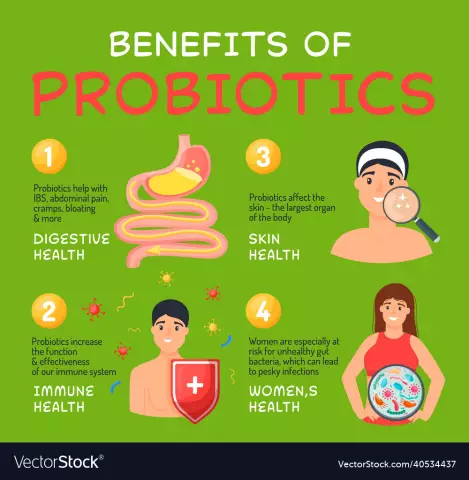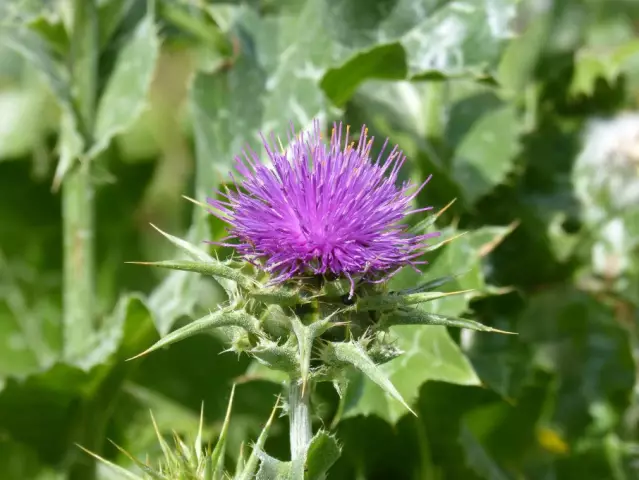- Author Rachel Wainwright [email protected].
- Public 2023-12-15 07:39.
- Last modified 2025-11-02 20:14.
Kaffetin
Caffetin: instructions for use and reviews
- 1. Release form and composition
- 2. Pharmacological properties
- 3. Indications for use
- 4. Contraindications
- 5. Method of application and dosage
- 6. Side effects
- 7. Overdose
- 8. Special instructions
- 9. Application during pregnancy and lactation
- 10. Use in childhood
- 11. In case of impaired renal function
- 12. For violations of liver function
- 13. Use in the elderly
- 14. Drug interactions
- 15. Analogs
- 16. Terms and conditions of storage
- 17. Terms of dispensing from pharmacies
- 18. Reviews
- 19. Price in pharmacies
Latin name: Caffetin
ATX code: N02BE71
Active ingredient: paracetamol + caffeine + propyphenazone + codeine (paracetamol + caffeine + propyphenazone + codeine)
Manufacturer: Alkaloid AD (Republic of Macedonia)
Description and photo update: 2019-14-08
Prices in pharmacies: from 98 rubles.
Buy

Caffetin is an analgesic-antipyretic with a combined composition.
Release form and composition
Dosage form - tablets: round flat, beveled, white and engraved on each side, on one side - the sign of the company "Alkaloid", on the other - the inscription "Caffetin" (10 pieces in strips, in a cardboard box 1 strip).
Content of active ingredients in 1 tablet:
- Codeine phosphate sesquihydrate - 10 mg;
- Paracetamol - 250 mg;
- Caffeine - 50 mg
- Propyphenazone - 210 mg
Auxiliary components in the composition of Caffetin: sodium lauryl sulfate, magnesium stearate, sodium starch glycolate, povidone, colloidal anhydrous silicon dioxide, calcium dihydrogen phosphate, microcrystalline cellulose, glyceryl behenate, sodium croscarmellose.
Pharmacological properties
Pharmacodynamics
Caffetin is a combined drug, the effect of which is due to its components.
Paracetamol has antipyretic and analgesic effects.
Caffeine stimulates the psychomotor centers of the brain, has an analeptic effect, reduces drowsiness, reduces fatigue, enhances the effect of analgesics, increases performance (both physical and mental), increases blood pressure and heart rate. Taking caffeine contributes to a more complete absorption of other active components of Caffetin.
Propyphenazone is characterized by analgesic and antipyretic effects. Codeine has a central antitussive effect (suppresses the excitability of the cough center). The analgesic effect of the substance is a consequence of the excitation of opiate receptors in different parts of the central nervous system and peripheral tissues, which leads to stimulation of the antinociceptive system and a change in the emotional perception of pain.
The analgesic effect of the drug manifests itself for 0.5-1 hours and lasts from 4 to 8 hours.
Pharmacokinetics
Paracetamol
Paracetamol absorption is high. When taken orally, the maximum concentration in blood plasma is observed after 0.5-2 hours. Approximately 15% of paracetamol binds to blood plasma proteins. This substance is able to penetrate the blood-brain barrier. Paracetamol is metabolized in the liver by conjugation with sulfates, glucuronides, or oxidation by microsomal enzymes. In the latter case, the process proceeds with the formation of toxic intermediate metabolites with their subsequent conjugation with glutathione. Deficiency of glutathione can lead to damage and necrosis of hepatocytes due to exposure to toxic intermediate metabolites. The half-life is from 1 to 4 hours. Paracetamol is excreted by the kidneys in the form of metabolites, mainly conjugates.
Caffeine
Oral absorption is good. Caffeine is absorbed throughout the entire intestine. After oral administration, the maximum plasma concentration is observed after 50-75 minutes. The substance is rapidly distributed in tissues and organs, easily penetrates the placental and blood-brain barriers. Approximately 25-36% binds to blood proteins (albumin). Predominantly metabolized in the liver (over 90%). The half-life is 3.9-5.3 hours. Caffeine and metabolites are excreted by the kidneys.
Propyphenazone
It is rapidly absorbed in the gastrointestinal tract. When taken orally, the maximum concentration in blood plasma is observed after 0.5-0.6 hours. It is metabolized in the liver, excreted in the form of metabolites in the bile and urine. The half-life is from 2.1 to 2.4 hours.
Codeine
When taken orally, it is rapidly absorbed. The maximum concentration in blood plasma occurs after 2-4 hours. Approximately 30% is bound to plasma proteins. It is metabolized in the liver to form active metabolites. Codeine is excreted in bile and urine. The half-life is 2.5 to 4 hours.
Indications for use
According to the instructions, Kaffetin is indicated for the relief of moderate pain syndrome of various etiologies:
- Algodismenorrhea;
- Toothache;
- Neuralgia;
- Arthralgia;
- Myalgia;
- Migraine;
- Headache;
- Post-traumatic conditions.
Contraindications
- Angina pectoris due to atherosclerosis of the coronary arteries;
- Hematopoietic disorders;
- Leukopenia;
- Liver failure;
- Deficiency of glucose-6-phosphate dehydrogenase;
- Renal failure;
- Increased excitability;
- Insomnia;
- Age up to 7 years;
- The period of pregnancy and breastfeeding;
- Hypersensitivity to drug components.
It is recommended to take Caffetin tablets with caution to patients with glaucoma and elderly patients.
Instructions for the use of Kaffetin: method and dosage
The dose of the drug and the period of treatment are prescribed by the doctor based on clinical indications.
The recommended dosage has age restrictions:
- Adults - 1 tablet 3-4 times a day, with severe pains, simultaneous administration of 2 tablets is allowed, daily dose - no more than 6 tablets;
- Children over 7 years old - 1 / 4-1 / 2 tablets 1-4 times a day.
The treatment period is up to 5 days.
Side effects
The use of Kaffetin can cause side effects:
- From the digestive system: nausea, increased activity of liver enzymes, gastralgia;
- From the nervous system: a decrease in the speed of psychomotor reactions, increased excitability (especially in children);
- From the hematopoietic system: agranulocytosis, leukopenia;
- Allergic reactions: itching, skin rash, Quincke's edema, urticaria.
Overdose
In case of an overdose, specific symptoms may occur that are characteristic of each active component of the drug.
Paracetamol
During the first 24 hours after ingestion, nausea, vomiting, pallor of the skin, abdominal pain, anorexia, impaired glucose metabolism and metabolic acidosis may occur. 12-48 hours after an overdose, signs of liver dysfunction may appear. In adults, the hepatotoxic effect is manifested in the case of taking 10,000 mg of paracetamol or more.
Caffeine
When taking a daily dose of caffeine in excess of 300 mg (including against the background of consumption of more than 4 cups of natural coffee with a volume of 150 ml), anxiety, headache, tremors, confusion, extrasystole may appear.
Codeine
Symptoms of chronic and acute overdose: confusion, cold clammy sweat, severe weakness, dizziness, anxiety, nervousness, fatigue, drowsiness, hypothermia, slow breathing difficulties, decreased blood pressure, bradycardia, convulsions, miosis.
Treatment
Recommended gastric lavage, activated charcoal intake, supportive therapy, measures aimed at maintaining cardiac activity and blood pressure, intravenous administration of naloxone.
Donators of SH-groups and methionine (a precursor in the synthesis of glutathione) are recommended to be administered within 8-9 hours after an overdose, acetylcysteine - within 8 hours.
If you suspect poisoning, you should immediately consult a doctor.
special instructions
Long-term use of the drug is recommended under regular monitoring of the functional state of the liver and peripheral blood.
During the period of treatment, alcohol should not be consumed, as it can cause gastrointestinal bleeding.
During therapy, excessive consumption of drinks containing caffeine (tea, coffee) can cause nausea, tachycardia, ringing in the ears and other symptoms of drug overdose.
The effect of the drug can distort the results of doping control in athletes, cause difficulty in determining the diagnosis in patients with acute abdominal pain syndrome.
Patients with pollinosis and bronchial asthma are most at risk of developing a hypersensitivity reaction.
During the period of using the drug, it is recommended to refrain from driving vehicles, mechanisms and engaging in other activities, the implementation of which requires a high speed of psychomotor reactions and concentration of attention.
Application during pregnancy and lactation
It is forbidden to use Caffetin tablets during pregnancy and lactation.
Pediatric use
It is forbidden to use Caffetin for the treatment of patients under 18 years of age.
With impaired renal function
It is forbidden to use Caffetin in the treatment of patients with renal failure.
For violations of liver function
It is forbidden to use Caffetin in the treatment of patients with hepatic insufficiency.
Use in the elderly
When treating elderly patients, Caffetin should be used with caution.
Drug interactions
When Kaffetin interacts with ethanol, antiepileptic drugs, zidovudine, barbiturates and rifampicin, the likelihood of hepatotoxicity increases, so it is not recommended to use the drug in these combinations.
With the simultaneous use of other drugs, the combined composition of Caffetin should be taken into account.
Caffeine, one of the active components of the tablets, accelerates the absorption of ergotamine, codeine enhances the effect of analgesics, hypnotics and sedatives.
Paracetamol - it is possible to slow down the elimination of chloramphenicol by 5 times, increase the activity of indirect anticoagulants (dicoumarin derivatives) in case of repeated administration of the drug.
Paracetamol absorption is accelerated when combined with metoclopramide.
Analogs
The analogues of Kaffetin are: Kaffetin SK, Kaffetin Light, Kaffetin Cold, Kofan Instant, Saridon, Algofetin, Fluomp Ekstratab, Novalgin, Safiston.
Terms and conditions of storage
Store in a dark, dry place at temperatures from 15 to 25 ° C. Keep out of the reach of children.
The shelf life is 3 years.
Terms of dispensing from pharmacies
Dispensed by prescription.
Reviews about Kaffetin
Reviews of Kaffetin indicate the effectiveness of the drug. Side effects (most often nausea or slight dizziness) are rare.
The price of Caffetin in pharmacies
The approximate price for Kaffetin is 115 rubles. per pack of 12 tablets.
Kaffetin: prices in online pharmacies
|
Drug name Price Pharmacy |
|
Caffetin Light tablets 12 pcs. RUB 98 Buy |
|
Caffetin light tablets 12 pcs. RUB 98 Buy |
|
Caffetin tablets 12 pcs. RUB 145 Buy |
|
Caffetin Cold tablets p.o. 10 pieces. 191 r Buy |
|
Caffetin Cold 500 mg + 30 mg + 15 mg + 60 mg film-coated tablets 10 pcs. 191 r Buy |

Maria Kulkes Medical journalist About the author
Education: First Moscow State Medical University named after I. M. Sechenov, specialty "General Medicine".
Information about the drug is generalized, provided for informational purposes only and does not replace the official instructions. Self-medication is hazardous to health!






